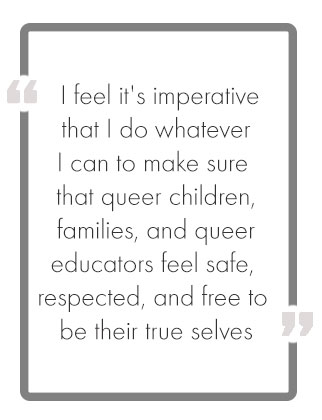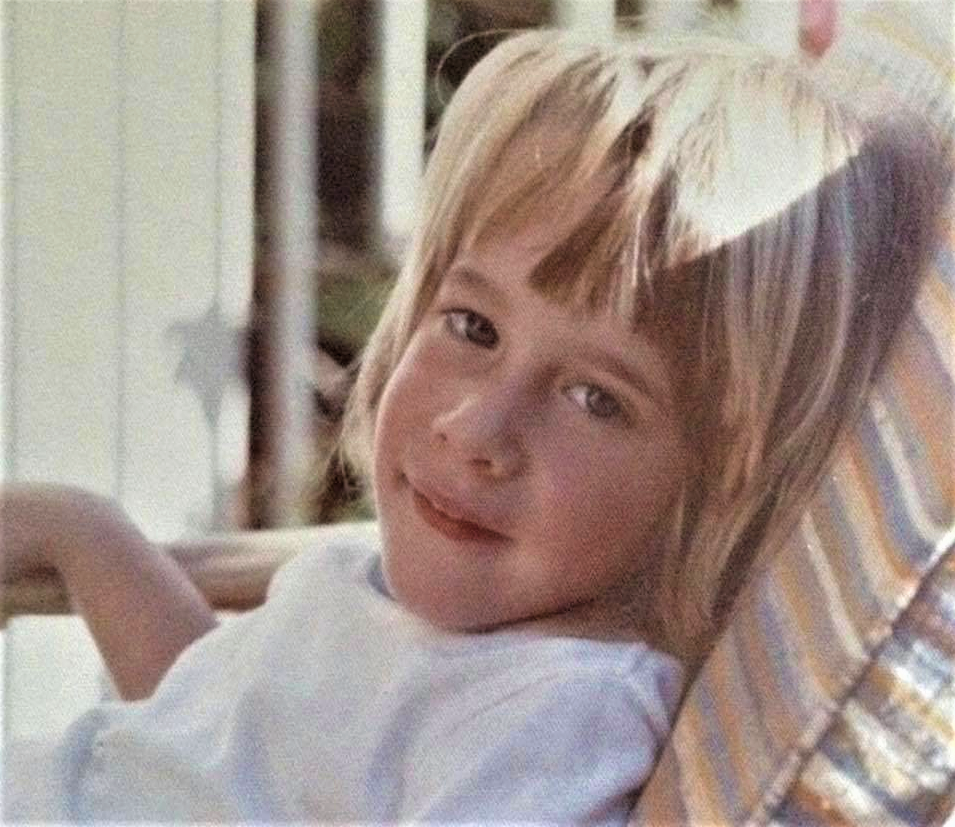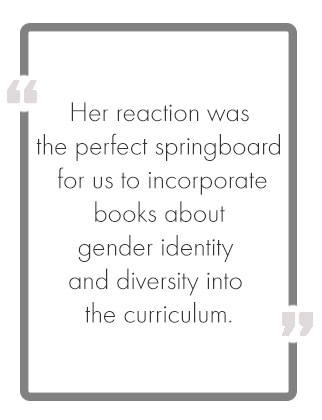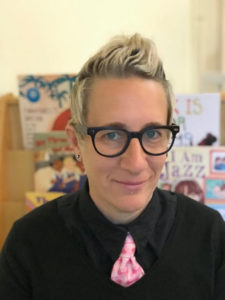
Sid: Hello Sara! It is such great pleasure and honour to be able to interview you. Besides being an experienced Montessorian, you are also a die-hard advocate for LGBTQIA+ communities. Your recent talk at the AMS 2019 conference on gender and sexuality in early childhood that I got to watch ‘live’ here from London I found very moving. Since then you started a group called The Queer Montessorian. Can you share a little bit about this initiative?
Sara: Thanks, Sid, thank you for taking the time to talk with me. I’m honoured and humbled by your choice of words to describe me. Thank you.

Upon reflection, I think my whole life has led me to the The Queer Montessorian. From age four to eighteen, I went to an all-girls school in Cape Town, South Africa. At age four, I knew I was different in ways that I couldn’t quite understand. I remember feeling so very small, sad and incredibly misunderstood. It’s hard to put into words how isolating it is to be young and queer without any acknowledgment or support. I didn’t have any role models; neither did I read about people like me in books. The most important messages I received throughout my entire school career were that I was stupid and that my life’s goal should be to be some man’s armpiece. I felt lost and angry and became the class clown. Looking back, now as an educator, I feel awful for all the educators whose paths I crossed because I made their lives miserable. I wasn’t cut out for that kind of transmissive system, and those teachers were not cut out to guide a human like me. It’s pretty miraculous that I am an educator today, let alone that I have started two early childhood programs. However, it makes sense that I was attracted to Dr. Montessori’s philosophy and that Early Childhood is my niche. All of my experiences were the unconscious impetus for The Queer Montessorian. Sid, I feel it’s imperative that I do whatever I can to make sure that queer children, families, and queer educators feel safe, respected, and free to be their true selves.

Back to your question Sid, while at the annual Montessori conference in DC this year it became apparent that currently there’s no space for queer Montessori educators. My goal in starting The Queer Montessorian was to create a queer space for us to collaborate, support and celebrate each other so that we can continue to be there for all the students, families and educators who need us. Being in education can be energising and fulfilling, and it can also be exhausting and challenging. Queer educators need a safe space to ask for help as well as to be with likeminded humans. We also have to start to mobilise so that we can lobby at different levels to ensure that our positions in schools are safe, even when we transition or come out. We need a supportive environment to share the most current research and data that’s out there. The Queer Montessorian is in its infancy, but I would love to grow the group and have worldwide members and even influence teacher training programme across the globe.
Sid: I agree wholeheartedly, and I’m so pleased that you have started this safe space. I also agree that teacher training programmes need to incorporate inclusive practice into their training. I know Montessori St Nicholas has had modules in their training programme on supporting gender and family diversity, and I can only hope that more training organisations take this seriously. We desperately need teachers who are able to queer normativity. From your own experience of working with children, can you share some queering moments?

Sara: In 2017 I taught children ages 6-9. One day my wife came to visit me at lunchtime. This caused some excitement and also some consternation specifically with one child who exclaimed: “But you can’t have two queens, you always need a king and a queen!” She was visibly upset at the notion that two women were living together in the same house without a man. At first, I didn’t respond. I didn’t have to because her friends jumped in and said: “That’s not true, you can have two queens or two kings living together in the same house.” Many others piped in offering more ideas to her. “Two women can get married, so can two men and they can have children.” “Even a prince and a prince can live together too!” Another child chimed in “President Barack Obama says it’s ok too. And it is ok.” After a while, I took the experience one step further by asking, “Does a king have to be a man? Does a queen have to be a woman?” From there, we had lively discussions about gender identity and labels. The child who initially was perturbed seemed much more at ease with the notion of two women living together. Her reaction was the perfect springboard for us to incorporate books about gender identity and diversity into the curriculum.
This year with the 3-6-year-olds that I taught, there was much discussion around whether or not I was a male or a female. Boys were always the ones to raise the question, “Are you a man or a woman? You have very short hair, you wear ties and bow ties, and you have so much hair on your arms that you must be a man. But you also have (insert slang for breasts here)” These frequent conversations were perfect segue-ways to the Gender Diversity and Equity curriculum. Many insightful and eye-opening discussions were had this year, and I’m sure all the children I taught now understand that gender is far more fluid than they imagined.
Sid: Thank you, those are two great stories! What would be your top two advice to schools and teachers about what they can do to ensure everyone feels included?

I think it’s imperative in this heteronormative society that every school includes sexual orientation, gender identity, and gender expression in their school’s non-discrimination statement. When schools add these words to their statement, they are communicating that their schools are inclusive and welcoming, to all families, educators, and children.
It’s also essential for schools to update all forms, such as application forms, family information forms, emergency forms, and any other forms that families will be filling out. It’s time to acknowledge that many families do not have a mother and a father, some have two moms, some a grandma, some two dads, and some humans are gender fluid and non-binary and so forth. These two ideas are the tip of the iceberg and yet are so incredibly meaningful. There is so much more; it’s an exciting time for Queer educators to gather together and change minds.

Sara Bloomberg (a.k.a Seaweed Rubinstein) M. Ed, is the head of Protea Montessori Consultants, a consulting company that strives to bring gender diversity, gender equity and the LGBTQA+ curriculum to educators across the globe. Sara was the founder of the Early Childhood Division at the St Augustine Public Montessori School and is AMS Credentialed (Early Childhood). Sara was the founding Director at Battery Park Montessori in New York and served on the faculty of West Side Montessori’s Teacher Education Program as a Field Consultant and Math Instructor. Sara has consulted for schools in New York and St Augustine. Sara is incredibly passionate about collaborating with educators and parents to help them support and guide LGBTQA children and teachers in the Early Childhood and Lower Elementary years. Sara uses “they, them and their” pronouns.
Thank you for sharing, Sara! It’s inspiring to hear your story! I’m grateful for your labor in the arena. 💕
Hooray! This is terrific 🙂 Lucky kids!